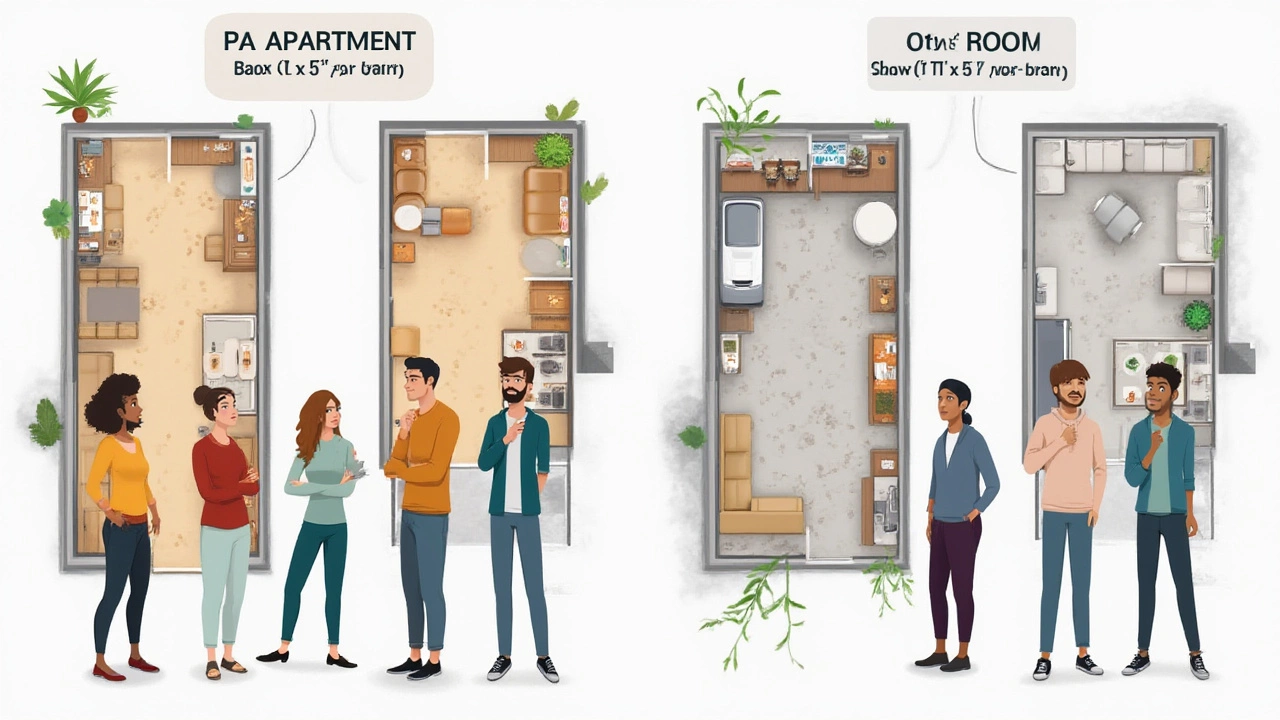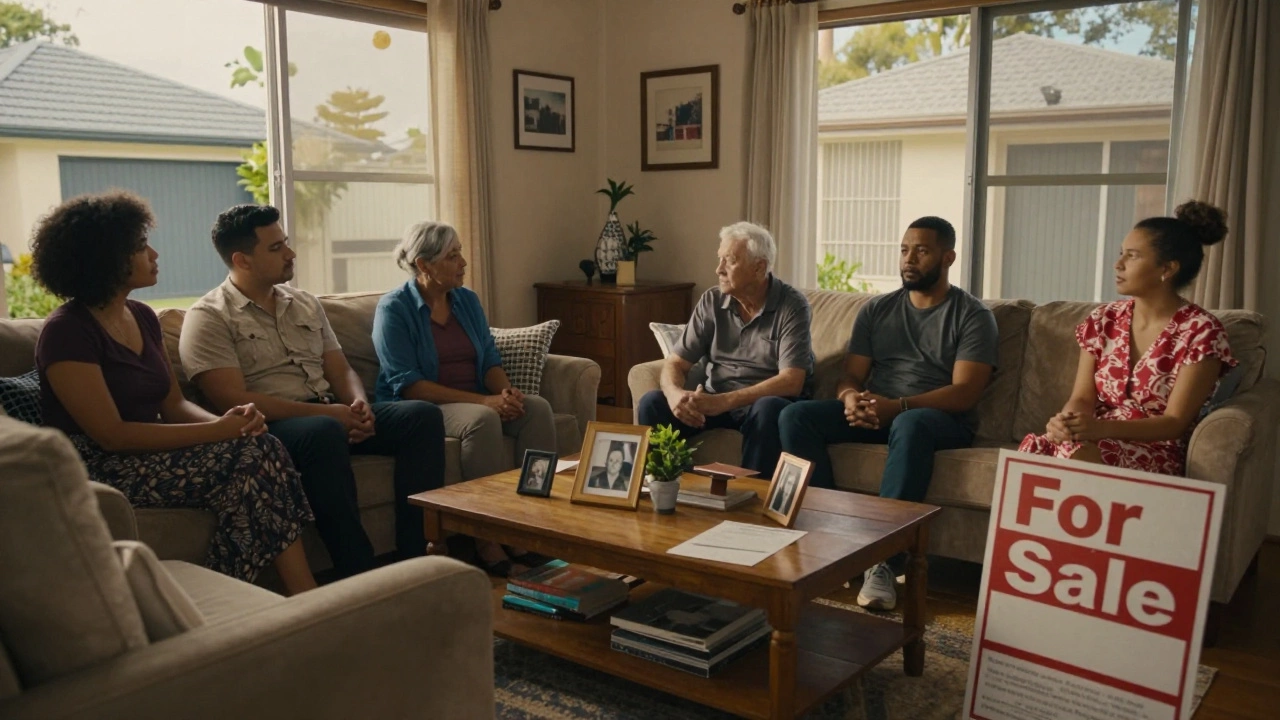Ever scrolled through apartment listings and noticed weird codes like "1K" in the description? You might think it’s a typo or some real estate lingo only agents understand. But these terms aren’t just random letters; they pack a lot of meaning, especially if you’re eyeing a move to Japan, or just come across one of these in a big city’s international rental ads.
What Exactly Is a 1K Apartment?
Let’s break it down straight away. The “1K” in “1K apartment” stands for a one-room place with a kitchen. The “1” is the main living space—think of it as your bedroom, living room, and office—all rolled into one. The "K" is short for kitchen. Simple as that.
It gets more interesting. In Japan, apartments are often described using a combo of numbers and letters. For example, “1DK” means one room, a dining area, and a kitchen, while “1LDK” adds a living area to the mix. But the 1K strips it down to basics: one versatile room and a small, separate kitchen—usually with just enough space for a sink, stovetop, and maybe a spot for a mini-fridge. If you’ve ever lived in a student dorm, you’ll get the vibe instantly.
You’ll mostly find these apartments in big cities like Tokyo, Osaka, or even Sydney in some international listings. They’re small—sometimes only 15 to 25 square meters. Yet for a single person (especially young workers or international students), it can feel just right. It’s easy to clean, and you aren’t drowning in rent. Quick fact: according to the Japan Real Estate Institute, in Tokyo’s busiest spots, the average size of a 1K apartment is just under 20 square meters. Got loads of stuff? You might need to get creative with storage solutions!
The actual layout varies. Usually, you walk in, kick off your shoes, and face the kitchen right by the door. The main room comes next, with the bathroom tucked off to the side. Newer buildings will separate the toilet and the shower, but older places might squeeze both into one unit bath. It’s less fancy, but efficient.
And just so you don’t mix things up—this isn’t a studio flat in the Western sense. Western studios usually have a mini kitchen right in the main living room, but a 1K almost always separates the kitchen by a wall or door. That wall can make a difference if you don’t want couch cushions smelling like fried onions.

Why Choose a 1K Apartment? Pros, Cons, and Clever Tips
So who actually rents these? Loads of people! Think students at the University of Tokyo, fresh graduates, young workers, or people just starting over. The biggest pull? Price and location. Instead of shelling out a fortune for extra rooms you never use, you get a place smack in the middle of everything. City life without selling a kidney. In 2024, the monthly rent for a 1K apartment in Tokyo’s central wards averaged about 80,000 yen ($770 AUD), compared to nearly double for a 1LDK. That's no small savings.
But living small needs a certain mindset. Here’s the honest deal.
- Space - You only get so much. If you love hosting dinner parties, a 1K isn't for you. But if you’re more into late-night Netflix than entertaining crowds, you won’t mind.
- Noise - Thin walls come with the territory. Earplugs or noise-cancelling headphones go from “nice-to-have” to “must-have”.
- Storage - IKEA hacks and under-bed drawers will become your best friends. Hanging racks, foldaway tables, and wall-mounted storage keep your room from looking like a closet exploded.
- Utility Bills - With less space, you’ll use less heating or cooling. Fast fact: one Tokyo city survey found residents of 1K flats paid about 30% less in energy bills compared to people in larger units.
- Cleaning - Vacuuming your whole apartment in under five minutes? Yes, please!
And if you’re moving into a 1K for the first time, a few pointers go a long way. Prioritize belongings—keep only what you actually use. If you can, choose multi-purpose furniture. For example, a futon can double as a bed and a sofa, and a collapsible dining table can free up floor space when you’re done eating. Plus, since the kitchen is separate, you can experiment with strong-smelling dishes without making your duvet part of the meal.
Security is usually pretty solid in modern 1K buildings. Many come with auto-lock doors, entry intercoms, or security cameras. Of course, older, cheaper buildings might not offer the same peace of mind, so check this before committing. When it comes to noise, street-facing flats can be lively, but if you’re a light sleeper, ask for something on a quieter side of the building.
Some folks worry about the bathrooms. Yep, you’ll hear stories of 1K apartments with "unit baths"—tiny little rooms with the toilet, shower, and sink squeezed into a single fiberglass capsule. Not exactly spa-like, but you probably won’t need to deep clean more than fifteen minutes a week.
| Type | Avg. Size | Avg. Rent (Monthly) | Kitchen Location | Best For |
|---|---|---|---|---|
| 1K | 18-22 m² | 80,000 yen | Separated, by entrance | Single, students |
| 1DK | 25-30 m² | 95,000 yen | Separate Dining Kitchen | Single, couple |
| 1LDK | 35-45 m² | 146,000 yen | Living/Dining/Kitchen | Couple, work-from-home |
| Studio | 20-30 m² | 88,000 yen | Open, with main room | Single |

Finding, Renting, and Living in a 1K Apartment
Ready to hunt for your own 1K? You won’t need to be a real estate pro, but a little strategy helps.
You’ll notice the best listings get snapped up fast, especially near universities or major train lines. If you’re going through a Japanese agent site, watch for keywords like "築浅" (chikuwasa, meaning newer build), "南向き" (minami-muki, south-facing for more sunlight), and "駅近" (eki-chika, close to station). Don’t be afraid to ask the agent about noise, neighbors, or past repairs—no one wants surprise mold behind their futon.
Have your paperwork ready: a copy of your ID, proof of income, and sometimes a local guarantor. Foreigners may need extra paperwork, so factor in time for that. And don’t let "key money" throw you off—this is a traditional, nonrefundable payment, usually worth one or two months’ rent, given to the landlord as a "thank you" for letting you in. Some places have skipped this old custom, so it’s worth asking if you can negotiate less or none at all.
When you finally get the keys, here’s how to make the space feel bigger than it looks:
- Light colors on walls and bedding bounce light, so skip heavy curtains or dark duvets.
- Mirrors create the illusion of space—hang one across from a window if you can.
- Keep clutter off the floor. Vertical storage, wall hooks, and open shelves help a ton.
- Try a rolling rack for clothes instead of a bulky wardrobe.
- If your building allows, get compact appliances: a washer-dryer all-in-one, or a stovetop oven you can fit on the counter.
- Foldable furniture—like a wall desk or dining table—means you can tuck it away when you’re done.
If a pet is a must-have, double-check the fine print. Almost all 1K apartments ban animals—so if you’re a cat person, don’t sign before confirming. And try to visit the place at different times of day. Noise and sunlight can change the vibe a lot from morning to night.
Here’s a cool tip—some landlords are getting creative. In busy neighborhoods, you’ll find 1K apartments that offer shared lounge spaces or rooftop gardens, especially in newer buildings targeting young professionals. These communal spaces let you meet neighbors and make the building feel less claustrophobic.
Don’t ignore the kitchen either. Since it’s separated, oily or fragrant cooking doesn’t invade the rest of the apartment. Tight on space? Get a portable induction cooktop. It saves surface area and is safer if you’re forgetful. Also, Japanese 1K kitchens are often too tiny for a full microwave and oven, so try a two-in-one model—it’s a game-changer.
If you’re serious about energy efficiency (and saving on utility bills), pay attention to old vs new buildings. Older 1Ks may have thin windows or no insulation, which can drive up your winter heating costs. In contrast, new builds usually have double-glazed windows and better insulation, slashing your monthly bills. According to a 2024 survey by Tokyo Gas, renters in insulated 1K apartments spent an average of 2,200 yen per month less on heating than those in older buildings.
And don’t get fooled by the floorplan alone. Even 20 square meters can feel totally different depending on window placement and shape. Visit in person, or get a virtual tour—it’s worth it!
So yeah, "1K apartment" isn’t just a boring real estate term. It’s a super practical, city-living solution for singles, students, and anyone craving a simple, affordable setup. With clever planning, you can turn it into a comfortable, even stylish, home base in any urban jungle. No need to be a minimalist monk—but a dash of discipline, and maybe KonMari’s book, will help you make it feel just right.


